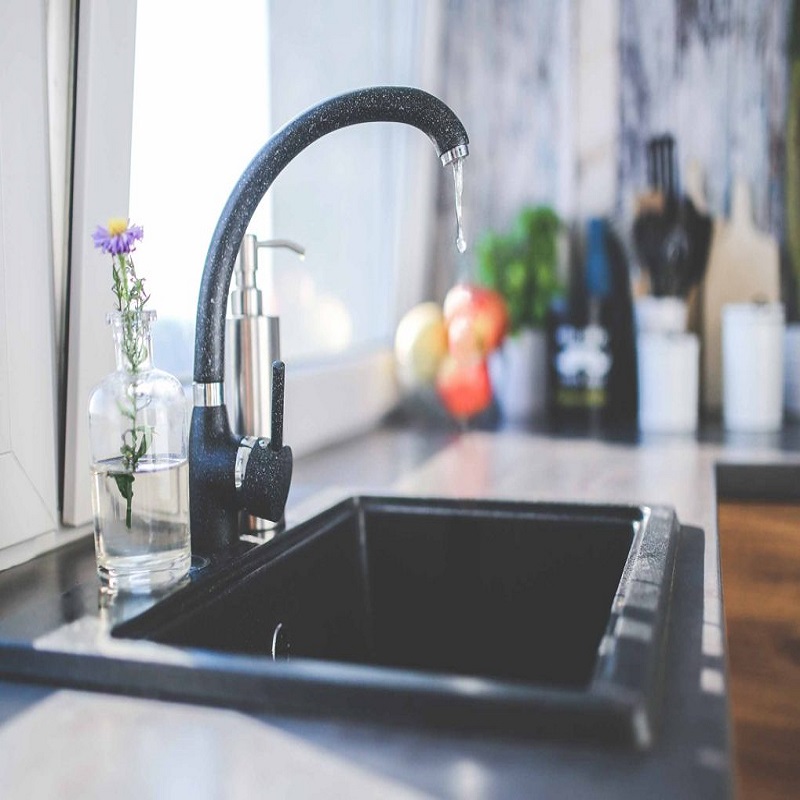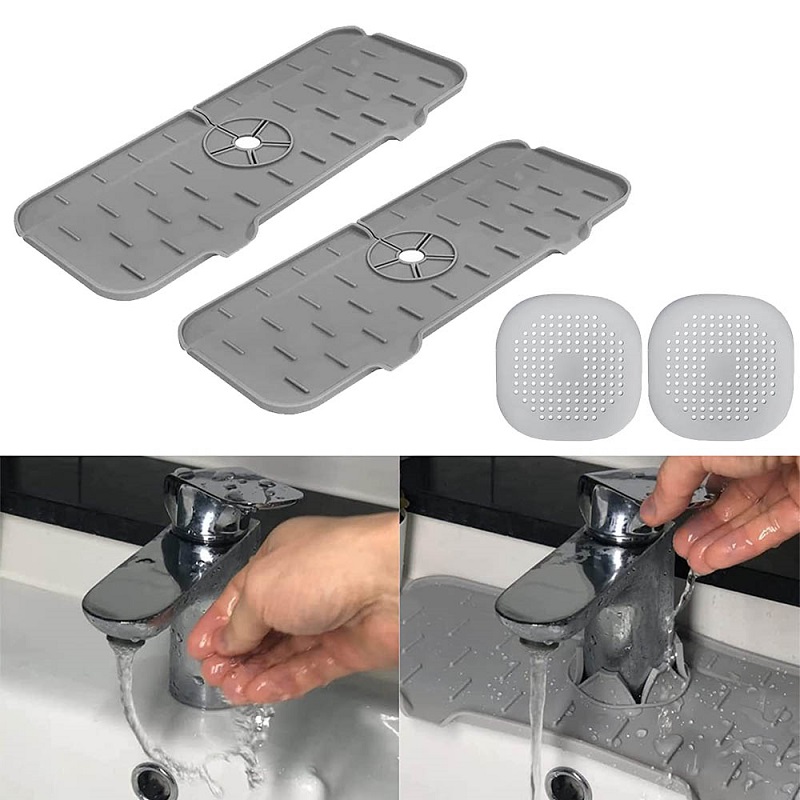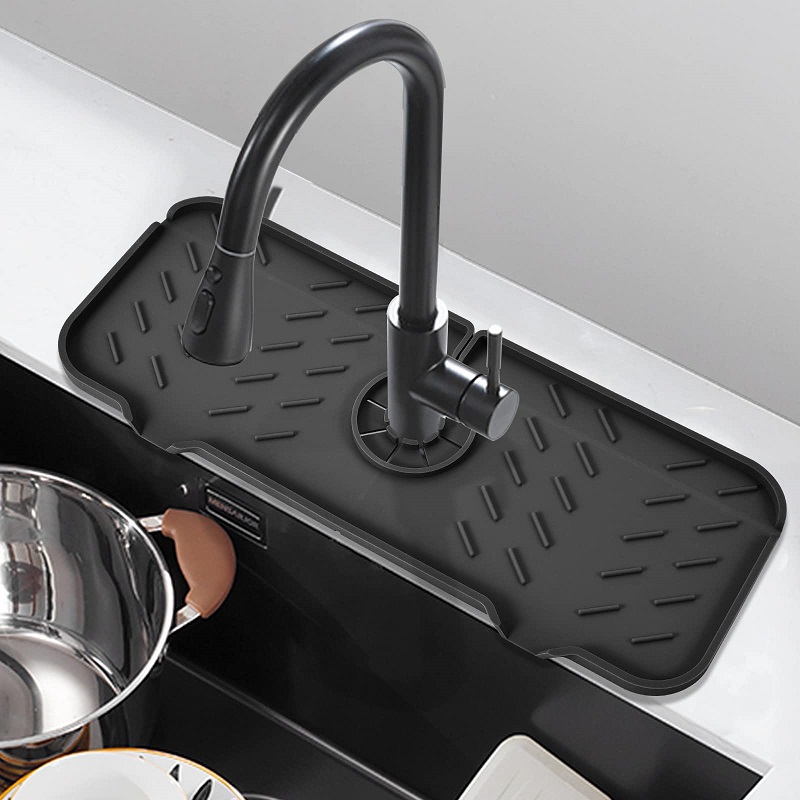How to keep faucets from freezing? During the cold winter months, it is important to take measures to prevent your outdoor faucets from freezing. When water freezes inside the pipes, it can cause them to burst, leading to costly repairs. However, with some simple precautions, you can protect your faucets from freezing and avoid potential damage to your plumbing system.

Insulate the Pipes
One of the most effective ways to prevent your bathroom faucets from freezing is to insulate the pipes. This can be done using foam pipe insulation, which is easy to install and can be purchased at any hardware store. Make sure to insulate the pipes both inside and outside the house, as well as any exposed pipes in unheated areas such as the garage or basement.
Disconnect and Drain the Hoses
Before the cold weather sets in, it is important to disconnect and drain all outdoor hoses. Leaving hoses attached to the faucets can cause water to back up into the pipes, increasing the risk of freezing. Once the hoses are removed, make sure to drain any remaining water and store them in a warm, indoor location.
Install Frost-Free Faucets
If you live in an area with particularly cold winters, consider installing frost-free faucets. These faucets are designed to prevent freezing by shutting off the water supply before it reaches the exterior of the house. While they may be more expensive, they can provide peace of mind and long-term protection for your plumbing system.
Use Heat Tape
Another option for preventing frozen faucets is to use heat tape. This electrical heating element can be wrapped around the pipes and plugged in when temperatures drop. Heat tape is especially useful for preventing frozen pipes in hard-to-reach areas or in locations where insulation may not be enough to protect against freezing.
Keep the Faucets Dripping
When temperatures are expected to drop below freezing, it can be helpful to keep the faucets dripping. Allowing a small amount of water to flow through the pipes can prevent them from freezing. This can be particularly useful for faucets that are located in areas that are prone to freezing, such as in a poorly insulated garage or shed.
Close the Indoor Valves
In addition to protecting the outdoor faucets, it is important to close the indoor valves that supply water to the outdoor faucets. This can help prevent water from seeping into the pipes and freezing during cold weather. Make sure to locate and shut off the valves, and then open the outdoor faucets to allow any remaining water to drain out.

Seal Any Cracks or Gaps
Inspect the area around the outdoor faucets for any cracks or gaps that could allow cold air to seep in. Use caulk or weather-stripping to seal any openings and prevent cold air from reaching the pipes. This can help to maintain a consistent temperature and reduce the risk of freezing.
Notes on keeping faucets from freezing
As the temperature drops during the winter months, it is important to take measures to prevent your faucets from freezing. Frozen pipes and faucets can lead to costly damage and inconvenience. Therefore, it is essential to be proactive and take steps to keep your faucets from freezing.
Insulate Outdoor Faucets
One of the most effective ways to prevent outdoor faucets from freezing is to insulate them. This can be done with foam faucet covers, which can be purchased at most hardware stores. These covers are designed to fit over outdoor faucets and provide insulation to protect them from freezing temperatures. Additionally, you can use foam insulation or fiberglass sleeves to wrap around the exposed pipes leading to the faucet for added protection.
Disconnect Hoses
Leaving hoses connected to outdoor faucets during the winter can lead to frozen and damaged pipes. It is important to disconnect and drain all hoses before the first freeze. This will help to prevent water from backing up into the faucets and freezing.
Keep Faucets Dripping
During particularly cold nights, allowing faucets to drip can help prevent them from freezing. When water is in motion, it is less likely to freeze. Therefore, allowing a small amount of water to continuously flow through the faucet can help prevent freezing. This is especially useful for faucets located near exterior walls or in unheated areas.
Use Heat Tape
If you have faucets that are particularly prone to freezing, you may want to consider using heat tape. Heat tape is an electrical heating element that can be wrapped around pipes to keep them warm and prevent freezing. It is important to follow the manufacturer’s instructions when using heat tape and to use it only as directed.
Seal Cracks and Gaps
Inspect the area around outdoor faucets for any cracks or gaps that could allow cold air to seep in. Use caulking or weather-stripping to seal any openings and prevent cold air from reaching the faucets. By eliminating drafts, you can help keep the area around the faucets warmer and reduce the risk of freezing.

Provide Heat Source
If you have outdoor faucets in an unheated area, such as a garage or shed, it may be necessary to provide a heat source to prevent freezing. This could be a small space heater or heat lamp, but it is important to use caution and follow all safety guidelines when using these devices. Additionally, you can consider installing a frost-proof outdoor faucet, which is designed to prevent freezing without the need for additional insulation or heat sources.
Importance of keeping faucets from freezing
Understanding the risks of frozen faucets
Frozen faucets can cause significant damage to a home’s plumbing system. When water freezes, it expands, which can create pressure inside the pipes. If this pressure becomes too great, it can cause the pipes to burst, resulting in water damage to the home. Additionally, frozen pipes can lead to a lack of water supply, making it difficult to perform daily tasks such as washing dishes or taking a shower. In extreme cases, frozen pipes can even lead to flooding, causing extensive damage to the home and its contents.
Preventing frozen faucets
There are several measures that homeowners can take to prevent their faucets from freezing. These include:
- Insulating exposed pipes: Pipes that are located in unheated areas, such as crawl spaces or attics, should be insulated to protect them from freezing temperatures.
- Keeping a drip of water: Allowing faucets to drip slowly can help prevent the build-up of pressure inside the pipes, reducing the risk of bursting.
- Opening cabinet doors: Opening the cabinet doors beneath sinks can help warm air circulate around the pipes, preventing them from freezing.
- Using heat tape: Heat tape can be wrapped around pipes to provide an additional layer of insulation and prevent freezing.
- Sealing air leaks: Any gaps or cracks in the home’s exterior should be sealed to prevent cold air from entering and causing pipes to freeze.
The importance of regular maintenance
In addition to taking preventive measures, it is important for homeowners to conduct regular maintenance on their plumbing systems. This includes checking for any leaks or damage to the pipes, as well as ensuring that all insulation is in good condition. Regular maintenance can help identify any potential issues before they become a problem, reducing the risk of frozen faucets and burst pipes.

Conclusion
Taking steps to prevent your outdoor faucets from freezing can save you from the hassle and expense of dealing with burst pipes. By insulating the pipes, disconnecting hoses, installing frost-free faucets, using heat tape, keeping faucets dripping, closing indoor valves, and sealing any cracks or gaps, you can protect your plumbing system from the dangers of freezing temperatures. With proper maintenance and precautions, you can ensure that your faucets remain functional and undamaged during the winter months.
